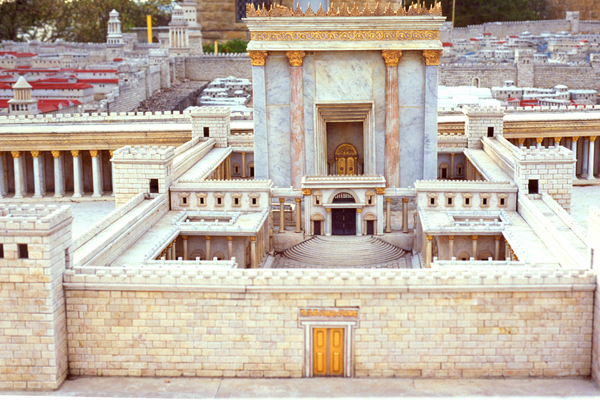The future return of the Temple will allow the nations of the world, despite their cultural differences, to serve the Creator as one.
By Rabbi Ari Enkin, Rabbinic Director, United with Israel
It’s a well known story. Bearded men living in foreign lands, maintaining their own language and customs and singing of their yearning for a return to their lonely mountain that had become the center of a desolate wilderness after their violent banishment some two millennia earlier.
We’re talking, of course, about the dwarves of The Hobbit.
What is less recalled from the allegorical story is the significance of that return to the rest of the world’s inhabitants. As the fictional wizard hints, the return cannot wait – evil is growing all around and the firewall to protect humanity centers around the return of the rightful owners to their mountain.
Apparently, June 7, 1967, the third day of the Six-Day War, marked the time when the return to the source of the allegory, the Temple Mount, could no longer await the arrival of the Children of Israel, despite the plans of Man.
Israel accepted borders not including the Temple Mount at the founding of the modern Jewish state in 1948. And 19 years later, Israel’s leaders pleaded with Jordan’s king to keep the peace along their mutual border in the defensive war being fought by Israel, a request which, if heeded, would have again left the Temple Mount outside Israel’s borders.
Jordan rejected Israel’s request, joined the ongoing invasion of Israel, and the Hand of G-d was seen in a miraculous counterattack that bewildered military analysts and ended with a complete abandonment of Jerusalem’s Old City, Temple Mount and all, to the young Jewish nation.
The return of the mountain has set the stage for the ever approaching fulfillment of the famous prophecy spoken by God through the prophet Isaiah, “I will bring them to My holy mount, and I will cause them to rejoice in My house of prayer, their burnt offerings and their sacrifices shall be acceptable upon My altar, for My house shall be called a house of prayer for all peoples.”
The original Temples too were sites of sacrifices that were brought by Gentiles as well as Jews, with a stone inscription, now on display at the Israel museum, indicating, in Greek, the furthest point a Gentile was to approach before transferring his offering, indicating that Gentiles were welcome up to that point.
People the world over were attracted to the “House of God” by 10 miracles associated with the Temple, such as wind never dispersing the perfect column of smoke that ascended from the altar, rain never extinguishing the open-air altar’s fire and a fly never being seen in the Temple’s butchering area.
People were interested and to learn the prophecies that were uniquely delivered, at the outset, to an entire nation, not just to a lone prophet in seclusion, with the 10 commandments.
The future return of the Ark of the Covenant to a rebuilt Temple, and the resumption of miraculous events surrounding daily sacrifices, will not only attract Gentiles to bring sacrifices but will allow all the nations of the world, despite their cultural differences, to serve the Creator as one.
In the words of the prophet Zephaniah, “For then I will convert the peoples to a pure language that all of them call in the name of the Lord, to worship Him of one accord.”
King Solomon knew the awe derived from even a short visit to the temple could melt away petty conflicts of a personal and national level, leading to world peace.
Upon completing construction of the First Temple, he therefore set up 10 additional menorahs, beyond the one required, each hosting seven flames, representing each of the 70 descendants of Noah listed in the bible, known as the original 70 nations.
The king then made a public prayer, recorded in the Book of Kings, dedicating the Temple, “… also to the gentile who is not from Your people Israel and who comes for the sake of Your Name from a distant land. When they will hear of Your great Name, Your powerful hand and Your outstretched arm and come to pray in this house, You will hear from Heaven, the place of Your abode, and do whatever the gentile requests of You, so that all the nations of the Earth will know Your Name and fear You.”
Let us hope that already this coming fall, during the Feast of Tabernacles (Sukkot), we will be able to sacrifice the required number of bulls to be brought on each of the seven days of the holiday – 13, 12, 11, 10, 9, 8 and 7 – for a total of 70 bulls, corresponding to the 70 nations of the world.
Happy Yom Yerushalayim!
